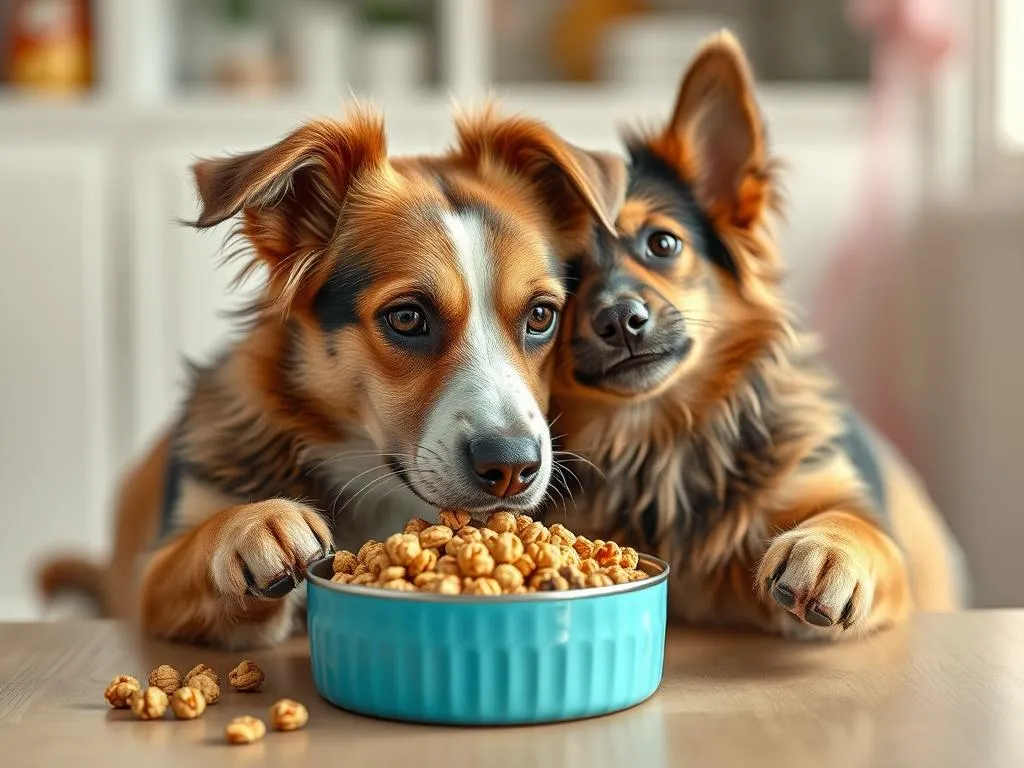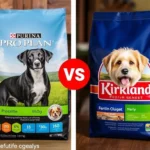
Introduction
A balanced diet is crucial for maintaining the health and happiness of our canine companions. Just like humans, dogs require a variety of nutrients in their meals to thrive. However, understanding what to include or exclude from a dog’s diet can be challenging. There are common misconceptions about dog nutrition, especially regarding human foods. One such topic that often arises is whether dogs can eat granola. Granola is a popular human snack known for its health benefits, but how does it fare when it comes to our furry friends?
Understanding Dog Nutrition
Essential Nutrients for Dogs
Dogs, like all living beings, require essential nutrients to maintain their health. These nutrients can be categorized into several key groups:
- Proteins: Vital for growth, maintenance, and repair of tissues. Proteins are essential for building muscles and producing enzymes and hormones.
- Fats: Necessary for energy, hormone production, and absorption of fat-soluble vitamins. Healthy fats also contribute to a shiny coat and healthy skin.
- Carbohydrates: While dogs can survive without carbohydrates, they provide a quick source of energy and can aid in digestion.
- Vitamins and minerals: Important for various bodily functions, including immune system performance, bone health, and metabolic processes.
Common Dietary Needs Based on Age and Breed
The nutritional needs of dogs can vary significantly based on their age, size, and breed.
- Puppies require a diet rich in proteins and calories to support their rapid growth and development.
- Adult dogs have different needs, which can vary based on their size and energy levels.
- Small breeds may need more calorie-dense foods due to their higher metabolism, while large breeds can benefit from diets designed to prevent joint issues.
Foods to Avoid in a Dog’s Diet
Certain foods can be toxic or harmful to dogs. It’s essential to be aware of these to keep your furry friend safe:
- Toxic foods: Chocolate, grapes, onions, garlic, and avocado can lead to serious health issues.
- Harmful human foods: Foods that are high in sugar, salt, or fat can contribute to obesity and other health concerns in dogs.
Granola – An Overview
What is Granola?
Granola is a popular snack made primarily from oats, nuts, seeds, and sweeteners like honey or sugar. It is often mixed with dried fruits and sometimes chocolate. Granola is praised for its nutritional benefits for humans, including high fiber content, healthy fats, and essential vitamins and minerals.
Types of Granola
Granola comes in various forms, which can affect its suitability for dogs:
- Store-bought granola often contains added sugars, preservatives, and other ingredients that may not be safe for dogs.
- Homemade granola allows for better control over ingredients, making it easier to ensure that it’s dog-friendly.
Common additives in granola may include:
- Nuts (safe in moderation)
- Dried fruits (watch out for raisins)
- Chocolate (toxic to dogs)
Can Dogs Eat Granola?
Assessing Granola’s Ingredients
Before sharing granola with your dog, it’s crucial to assess its ingredients. While some components of granola can be safe for dogs, others can be harmful.
- Safe ingredients: Plain oats, some nuts (like peanuts), and certain seeds can be beneficial in moderation.
- Harmful ingredients: Chocolate, raisins, and certain sweeteners (like xylitol) are toxic to dogs. Always read the label and avoid granola that contains these ingredients.
Potential Benefits of Granola for Dogs
Granola can offer several benefits when given in moderation:
- Nutritional content: The high fiber content in granola can aid digestion and help maintain a healthy weight.
- Energy boost: Granola can provide a quick energy boost, making it a suitable occasional treat after exercise or playtime.
Risks and Considerations
While granola can be a tasty snack, there are risks to consider:
- Allergies: Some dogs may be allergic to nuts or grains, which can lead to digestive issues or skin reactions.
- Portion control: Granola is calorie-dense, and overfeeding can lead to obesity, especially in less active dogs.
- Digestive issues: The high fiber content can cause gastrointestinal problems if introduced too quickly or given in excess.
How to Safely Introduce Granola to Your Dog
Choosing the Right Granola
When selecting granola for your dog, keep these tips in mind:
- Read labels: Always check for harmful ingredients such as chocolate, raisins, or added sugars.
- Opt for low-sugar: Look for granola that has minimal added sugars and is free from artificial additives.
Portion Sizes and Frequency
Determining the right portion size for your dog is essential. Here are some general guidelines:
- Small dogs: 1 teaspoon of granola can be a suitable occasional treat.
- Medium dogs: 1 tablespoon of granola is appropriate.
- Large dogs: 2 tablespoons can be given from time to time.
Granola should be an occasional treat and not a regular part of your dog’s daily diet.
Monitoring Your Dog’s Reaction
When introducing any new food, it’s vital to monitor your dog for any adverse reactions:
- Signs of allergies: Look for itching, swelling, or gastrointestinal distress.
- Digestive discomfort: Watch for symptoms like diarrhea or vomiting. If these occur, discontinue feeding granola and consult your veterinarian.
Alternative Healthy Snacks for Dogs
If you’re looking for safe and healthy alternatives to granola, consider the following options:
Safe Human Foods for Dogs
Here’s a list of safe fruits and vegetables that dogs can enjoy:
- Apples (without seeds)
- Carrots
- Pumpkin
- Blueberries
- Green beans
Other Grain Options
Grains can be a healthy addition to your dog’s diet. Alternatives like oatmeal can provide benefits without the risks associated with granola.
Homemade Treat Recipes
Making homemade treats allows you to control the ingredients and ensure they’re safe for your dog. Here are a couple of simple recipes:
- Peanut Butter Oatmeal Treats:
- 1 cup rolled oats
- 1/2 cup unsweetened peanut butter
- 1/4 cup water
-
Mix and form into small balls, then bake at 350°F for 15 minutes.
-
Pumpkin Dog Biscuits:
- 1 cup pumpkin puree
- 2 cups whole wheat flour
- 1/4 cup oats
- Mix and roll out, then cut into shapes and bake at 350°F for 20-25 minutes.
Conclusion
Granola can be a delightful treat for dogs when prepared and offered mindfully. It holds potential benefits, but it’s crucial to be aware of its risks and ensure moderation. Always consider your dog’s individual health needs and dietary restrictions when introducing new foods. A balanced diet tailored to your dog’s specific requirements is essential for their overall well-being. Consulting with a veterinarian can provide personalized advice to ensure your furry friend stays happy and healthy.
Frequently Asked Questions (FAQs)
Can dogs eat all types of granola?
Not all granola is safe for dogs. Always check the ingredient list for harmful components like chocolate or raisins.
What should I do if my dog eats granola with harmful ingredients?
If your dog consumes granola containing harmful ingredients, contact your veterinarian immediately for guidance.
Are there specific granola brands recommended for dogs?
While there are no widely endorsed granola brands specifically for dogs, choosing low-sugar and additive-free options can be a safer bet.
Can granola be used as a regular part of my dog’s diet?
Granola should only be an occasional treat due to its calorie density and potential allergens. It’s best to maintain a balanced diet primarily consisting of dog food formulated for their specific needs.









